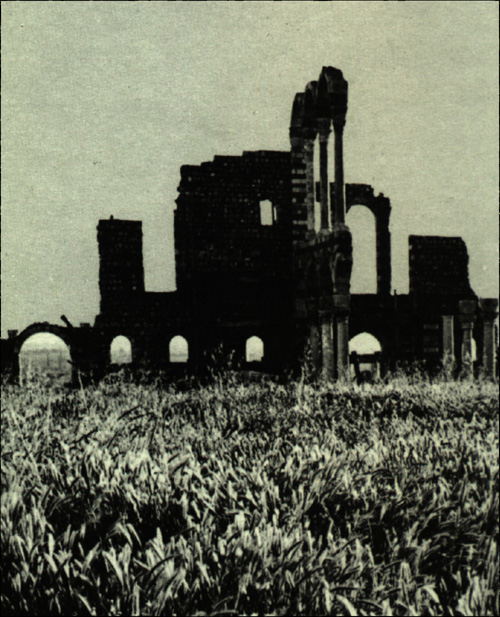The Umayyad Ruins of Anjar


Almost immediately after Lebanon gained its independence in 1943, the young Lebanese Antiquities Department gravitated to a strip of land in the Bekaa plain,sandwiched in between the Lebanon and Anti-Lebanon mountains, around 30 miles east of Beirut.
This was Anjar, and Anjar then was a stretch of bland barrenness - a rash of parched shrubbery, stagnant swamps and archeological remains.
The ruins to be found in Anjar then were painfully modest, especially when they were compared with the rest of Lebanon's archeological wonders - the Phoenician glory of Sidon and Tyre, the magic timelessness of Byblos, the Roman splendor of nearby Baalbek.
What attracted the antiquities experts to Anjar in the 1940's was not so much the ruins themselves as the promise these ruins held out. For the ruins suggested that beneath the impersonal greyness of Anjar, hidden by over a millenium of violent history, lay vestiges of the 7th and 8th century years when the Umayyads, the warlike Moslem Arab caliphs, held sway over the vast area that stretched between the Chinese border and the South of France.
That suggestion was particularly interesting because Lebanon, crossroads of the ages and host to most of the world's great peoples,boasted ample archeological evidence of almost all the stages of Arab history - with the exception of the Umayyads. All that was left of the Umayyads in Lebanon was a small mosque in Baalbek, and the prospect of unearthing more substantial remains, of finding the missing links, was an exciting one.
Acting on this hope, the Antiquities Department set to work. Excavations have been going on since then, and the hope has been proved justified. Out of the aridness of Anjar, a fascinating Umayyad town is emerging.

